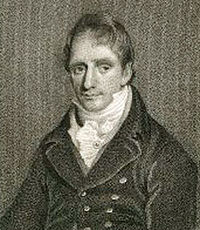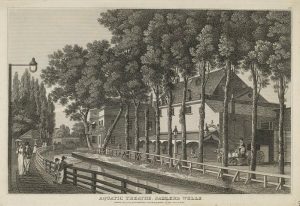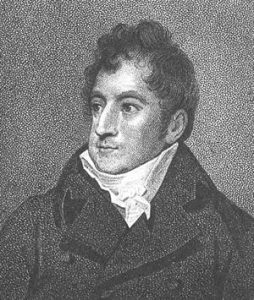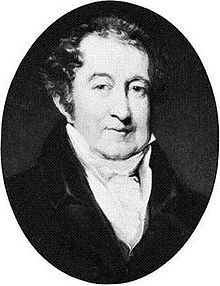Click here for English translation
Charles Dibdin, ‘The Younger’, (1768-1833)

Charles Dibdin “il Giovane”, noto anche come Charles Isaac Mungo, nacque il 27 ottobre 1768 a Londra, primogenito dell’attore Charles Dibdin e dell’attrice Harriet Pitt. Visse in un’epoca di grande proibizionismo, ma fu sempre dedito al teatro, per il quale nutriva un enorme interesse, grazie anche all’influenza del noto genitore. Ricevette il soprannome di Mungo in ragione di un ruolo interpretato dal padre nell’opera The Padlock (1768) del drammaturgo Isaac Bickerstaffe, dal quale invece ereditò il suo secondo nome.
Charles fece il suo debutto teatrale insieme al fratello, Thomas John, in The Jubilee di Garrick nel 1775. In seguito alla separazione dei genitori, però, venne affidato insieme a Thomas John ad un parente della madre, per poi venire mandato in collegio nel nord dell’Inghilterra all’età di nove anni. Cinque anni dopo Charles tornò a Londra per cominciare un apprendistato di sette anni presso il banco dei pegni di Mr. Cordy a Snow Hill.
Dibdin, tuttavia, preferiva la letteratura all’attività commerciale, come testimoniano alcune opere pubblicate a partire dal 1792, la prima delle quali fu la raccolta di poesie Poetical Attempts: by a Young Man. Nel 1797, lasciò il banco dei pegni per debuttare come intrattenitore al Royalty Theatre nel one-man show Sans six sous, titolo che nasconde un gioco di parole sulla sua povertà e un riferimento al teatro del padre, il Sans Souci Theatre.
Nello stesso anno sposò l’attrice Mary Bates, dalla quale ebbe undici figli. In seguito al matrimonio i due coniugi firmarono un contratto della durata di tre anni con Philip Astley, proprietario dell’Amphitheatre of the Arts, per il quale Dibdin scrisse canzoni, prologhi, epiloghi ed opere musicali in atto unico.
Nel 1799 marito e moglie si unirono ad una compagnia equestre itinerante che li portò ad esibirsi a Liverpool, Bristol e Manchester, mentre nel 1800 divenne impresario del teatro Sadler’s Wells di Londra, la cui fortuna fu accresciuta anche dalle nuove opere scritte dallo stesso Dibdin, che soddisfacevano il gusto per lo spettacolo e per il sentimentalismo patriottico del pubblico. Un esempio fu The Wild Man (1809), in cui l’assoggettamento volontario dell’‘uomo selvaggio’ al potere imperiale sembra rappresentare la costituzione dell’impero britannico come un processo benevolo giustificato da una motivata superiorità morale.

Nel 1804 Dibdin installò al Sadler’s Wells una grande vasca che gli permise di pubblicizzarlo come teatro acquatico in cui si svolgevano battaglie navali realistiche e salvataggi di bambini da parte di cani Terranova.
Nelle sapienti mani di Dibdin e del suo maggior collaboratore Joseph Grimaldi, il clown più popolare nel teatro dell’epoca, la pantomima si trasformò in un genere urbano, soprattutto grazie alla sua forma versatile, che permetteva di rappresentare scene della città moderna, e alla satira, che prendeva di mira le manie del mondo metropolitano.
Charles Dibdin mantenne il ruolo di manager del Sadler’s Wells anche dopo il disastro avvenuto il 15 ottobre 1807, quando 18 persone morirono durante una fuga precipitosa causata da un falso allarme per un incendio. Tuttavia, la fama del teatro era ormai in decino: la fine delle guerre Napoleoniche ridusse l’interesse del pubblico per il tipo di intrattenimento offerto da Dibdin, mentre la moglie morì nel 1816, lasciandolo solo e pieno di debiti. Proprio a causa di questi, l’attore fu imprigionato nel 1819, ma venne rilasciato due anni dopo, in seguito alla vendita delle sue azioni del Salder’s Wells.
Continuò a scrivere canzoni, pantomime e poesie come Young Arthur, or, The Child of Mystery: a Metrical Romance; fu direttore di scena al Royal Amphitheatre dal 1822 al 1823 e manager del Surrey Theatre tra il 1825 e il 1826. Nel 1826 pubblicò A History of the London Theatres, mentre la sua ultima farsa, Nothing Superfluous, risale al 1829. Le sue memorie, completate nel 1830, non furono date alla stampa fino alla pubblicazione della versione ridotta del 1956.
Charles Isaac Mungo Dibdin morì il 13 gennaio 1833, senza essere riuscito ad eguagliare la fama del padre o il successo teatrale del fratello, ma essendosi distinto grazie all’amministrazione del Sadler’s Wells Theatre, alla sua fede incrollabile e alla sua salda morale.
English Translation
Charles Dibdin, ‘The Younger’, (1768-1833)
Charles Didbin the younger, also known as Charles Isaac Mungo, was born on the 27th October 1768 in London, firstborn of actor Charles Didbin and actress Harriet Pitt. He lived in a time of great prohibitionism but was always dedicated to the theatre, to which he harboured great interest thanks, in part, to the influence of his then-famous parents. He was given the nickname Mungo because of a role he portrayed in The Padlock (1768) by Isaac Bickerstaffe, from whom he inherited his second name.
Charles made his theatrical debut together with his brother, Thomas John, in David Garrick’s The Jubilee in 1775. However, following their parents’ separation, Charles and his brother were put into their mother’s care and sent to a boarding school at the age of nine. Five years later, Charles returned to London to start a seven-year apprenticeship with a pawnbroker at Snow Hill.
Still, Didbin preferred literature to business, as can be seen from his published works from 1792 onwards, the first of which was the collection of poetry titled Poetical Attempts: by a Young Man. In 1797, he left his apprenticeship to debut as a performer at the Royalty Theatre in a one-man show called Sans six sous, a title with a hidden play on words referring to his poverty and his father’s theatre, the Sans Souci Theatre.
That same year he married actress Mary Bates, with whom he had eleven children. Following the marriage, the couple signed a three-year contract with Philip Astley, owner of the Amphitheatre of the Arts, for whom Didbin wrote songs, prologues, epilogues and one-act musical plays.
In 1799 Didbin and his wife joined a touring equestrian company that took them to perform in Liverpool, Bristol and Manchester; in 1800, he became manager of the Sadler’s Wells Theatre in London. There, his new works were very appreciated, satisfying the public’s patriotism and taste for performing arts. One example of this was The Wild Man (1809), in which the voluntary submission of the ‘wild man’ to imperial power seemed to make the creation of the British Empire out to be a benevolent act justified and driven by a sense of moral superiority.
In 1804 Didbin had a large pool installed in the Sadler’s Wells which allowed him to advertise the theatre as an aquatic theatre, where performances of realistic naval battles and children’s rescues by Newfoundland dogs took place.
In the skilful hands of Didbin and his main collaborator Joseph Grimaldi, the most popular clown in the theatre of the time, the pantomime transformed into an urban genre, thanks most of all to its versatile art form, that allowed the representations of scenes of the modern city, and to the satire that targeted the quirks of the metropolitan world.
Charles Didbin remained the manager of Sadler’s Wells even after the disaster that took place on the 15th October 1807, when 18 people died during a stampede caused by a false fire alarm. However, the theatre’s fame had started to decline: the end of the Napoleonic wars reduced public interest in the type of entertainment Didbin offered, whilst his wife died in 1816, leaving him alone and in debt. Due to the outstanding debts, the actor was jailed in 1819 but released two years later following the sale of his shares of Salder’s Wells.
He continued to write songs, pantomimes and poems like Young Arthur, or, The Child of Mystery: a Metrical Romance; he became stage manager of the Royal Amphitheatre from 1822-1823 and manager of the Surrey Theatre from 1825-1826. In 1826, he published A History of the London Theatres, meanwhile his last show, Nothing Superfluous, took place in 1829. His memoirs, completed in 1830, weren’t printed until the abridged version was published in 1956.
Charles Isaac Mungo Didbin died on the 13th January 1833, without having succeeded at equalling his father’s fame or his brother’s theatrical success. Nevertheless, it should be mentioned that he distinguished himself for his good administration of the Sadler’s Wells Theatre, his unwavering faith and his sound morals.
Translated by Aisha Gueye
Revised by Dott.ssa Valentina Pramaggiore
Bibliografia/Bibliography:
Moody, Jane, Illegitimate Theatre in London, 1770-1840 (Cambridge, Cambridge University Press, 2000)
http://www.oxforddnb.com/view/article/7586?docPos=2 [Matthew Kilburn, ‘Dibdin, Charles Isaac Mungo (1768–1833)’, Oxford Dictionary of National Biography, Oxford University Press, 2004; consultato il 12/04/16]


